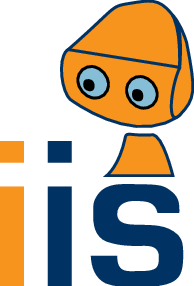research:projects
Differences
This shows you the differences between two versions of the page.
| Both sides previous revision Previous revision Next revision | Previous revision Next revision Both sides next revision | ||
|
research:projects [2019/07/15 09:38] Justus Piater |
research:projects [2019/08/29 17:35] Justus Piater [Current Projects] |
||
|---|---|---|---|
| Line 3: | Line 3: | ||
| ===== Current Projects ===== | ===== Current Projects ===== | ||
| - | OLIVER - Open-Ended Learning for Interactive Robots (EUREGIO IPN, 2019-2022): We would like to be able to teach robots to perform a great variety of tasks, including collaborative tasks, and tasks not specifically foreseen by its designers. Thus, the space of potentially-important aspects of perception and action is by necessity extremely large, since every aspect may become important at some point in time. Conventional machine learning methods cannot be directly applied in such unconstrained circumstances, as the training demands increase with the sizes of the input and output spaces. | + | **OLIVER** - Open-Ended Learning for Interactive Robots (EUREGIO IPN, 2019-2022): We would like to be able to teach robots to perform a great variety of tasks, including collaborative tasks, and tasks not specifically foreseen by its designers. Thus, the space of potentially-important aspects of perception and action is by necessity extremely large, since every aspect may become important at some point in time. Conventional machine learning methods cannot be directly applied in such unconstrained circumstances, as the training demands increase with the sizes of the input and output spaces. |
| Thus, a central problem for the robot is to understand which aspects of a demonstrated action are crucial. Such understanding allows a robot to perform robustly even if the scenario and context change, to adapt its strategy, and to judge its success. Moreover, it allows the robot to infer the human intent and task progress with respect to the goal, enabling it to share the task with humans, offer help or ask for help, resulting in natural human-robot cooperative behavior. | Thus, a central problem for the robot is to understand which aspects of a demonstrated action are crucial. Such understanding allows a robot to perform robustly even if the scenario and context change, to adapt its strategy, and to judge its success. Moreover, it allows the robot to infer the human intent and task progress with respect to the goal, enabling it to share the task with humans, offer help or ask for help, resulting in natural human-robot cooperative behavior. | ||
| Line 10: | Line 10: | ||
| </html> | </html> | ||
| - | {{:research:imagine-transparent.png?nolink&200 ||}}[[https://www.imagine-h2020.eu|IMAGINE - Robots Understanding Their Actions by Imagining Their Effects ]] (EU H2020, 2017-2020): seeks to enable robots to understand the structure of their environment and how it is affected by its actions. “Understanding” here means the ability of the robot (a) to determine the applicability of an action along with parameters to achieve the desired effect, and (b) to discern to what extent an action succeeded, and to infer possible causes of failure and generate recovery actions. | + | {{:research:imagine-transparent.png?nolink&200 ||}}[[https://www.imagine-h2020.eu|IMAGINE - Robots Understanding Their Actions by Imagining Their Effects ]] (EU H2020, 2017-2021): seeks to enable robots to understand the structure of their environment and how it is affected by its actions. “Understanding” here means the ability of the robot (a) to determine the applicability of an action along with parameters to achieve the desired effect, and (b) to discern to what extent an action succeeded, and to infer possible causes of failure and generate recovery actions. |
| <html> | <html> | ||
research/projects.txt · Last modified: 2024/02/19 12:24 by Antonio Rodriguez-Sanchez

